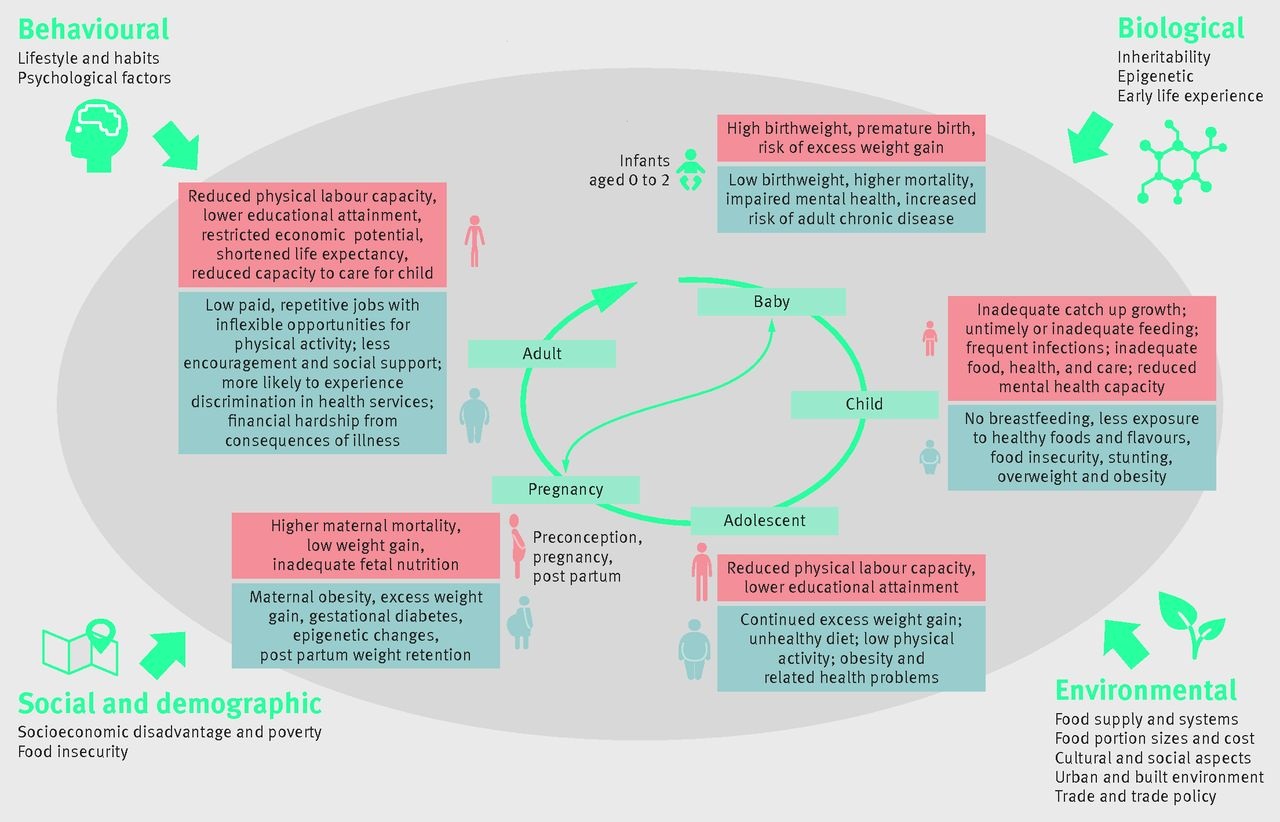- Filter By :
- Polity & Governance
- International Relations
- Social Justice
-
Q. What do you understand by ‘Double Burden of Malnutrition’? Suggest steps that can be taken to tackle the Double Burden of Malnutrition. (250 words)
28 Jan, 2020 GS Paper 2 Social JusticeApproach
- Explain the meaning of the double burden of malnutrition.
- Suggest ways to tackle the double burden of malnutrition.
- Give a conclusion.
Introduction
- According to the WHO, “The double burden of malnutrition is characterised by the coexistence of undernutrition along with overweight and obesity, or diet-related noncommunicable diseases, within individuals, households and populations, and across the lifecourse.”
- Individuals who have a body mass index, or BMI, of 25 or more are considered overweight while those with a BMI less than 18.5 are considered underweight. Women seem to be affected more by both forms of malnutrition compared to men.
Body
Double Burden of Malnutrition in India:
- The Global Nutrition Report found that India has the world’s largest number of stunted (46.6 million) and wasted children (25.5 million).
- 2% of its under-five children are overweight.
- 23% of women and 20% of men aged 15-49 are underweight, and almost the same percentage are overweight or obese (21% of women and 19% of men).
- The proportions have doubled in the last decade.
- As reflected in National Family Health Survey-4 (NFHS-4), conducted in 2015-16, even as under-nutrition continues to remain extraordinarily high in the poorer parts of the country, obesity has reached endemic levels in some of the richer parts of the country.
- The Global Hunger Index (GHI) ranked India at 103 among 119 countries in 2018, in view of the prevalent undernutrition situation. At the same time, overnutrition is emerging as a silent epidemic in many parts of the country.
- The latest research shows that despite doubling the rate of stunting reduction in the past 10 years from the previous decade, India still has the largest share of the world’s undernourished population.
Drivers of India’s Double Burden of Malnutrition
Steps Needed to Tackle Double Burden of Malnutrition in India
- As recommended by the UNICEF, special attention is required for preventing undernutrition among:
- the first two years of a child’s life;
- the adolescence years for girls;
- and pregnancy and lactation for mothers.
- These are the periods of time when proven nutrition interventions offer children the best chance to survive and reach their optimal growth and development.
- To tackle overweight/obesity, taxing high fat, high sugar and high salt products is the necessity. Countries like Mexico and the United Kingdom, which levied such taxes, had shown reduction in instances of heart diseases and overweight.
- Strengthen and expand on nutrition schemes for adolescent girls: more than 44% of India's adolescent girls are underweight, that's they have a body mass index of less than 18.5. In most states, the proportion of adolescent girls with anaemia is alarmingly high, ranging between 76% and 92.9%.
- Invest heavily in social welfare programmes: a major expansion of elementary education, extending a wide range of essential services and facilities, from healthcare and clean water to social security and basic infrastructure.
- Diversify the Public Distribution System (PDS) to include fortified foods and high nutrition foods such as millets. Besides, strengthen MGNREGA to ensure better food security.
- Improve access to public healthcare for poorer communities with successful implementation of Ayushman Bharat- National Health Protection Scheme
- Ensuring the success of programmes and policies against child undernutrition (POSHAN Abhiyaan), anaemia (Anaemia Mukt Bharat) and healthy eating (Eat Right India), the Integrated Child Development Services (ICDS), the National Health Mission, the Janani Suraksha Yojana, the Matritva Sahyog Yojana, the Mid-Day Meal Scheme, and the National Food Security Mission, etc.
- Ensuring strict implementation of NITI Aayog’s National Nutrition Strategy and National Nutrition Mission.
- Coherence is needed in areas of public policy across multiple ministries – incentivising the cultivation and consumption of a range of food commodities; using the levers of government financing to buy better nutrition (not just more calories) in programmes such as the PDS, ICDS and school meals; ensuring optimal healthcare of adolescents, pregnant women and young children; restricting the marketing of unhealthy foods and drinks; and expanding efforts to improve nutrition literacy.
- A sharp evidence-based and data-driven approach to diagnosing the challenge of malnutrition in India’s states, districts and communities.
Conclusion
This double burden of malnutrition offers a unique and important opportunity for integrated action on malnutrition in all its forms. Addressing the double burden of malnutrition will be key to achieving Sustainable Development Goals (in particular Goal 2 and Target 3.4) and the Commitments of the Rome Declaration on Nutrition, within the UN Decade of Action on Nutrition (2016-25).
To get PDF version, Please click on "Print PDF" button.
Print PDF





